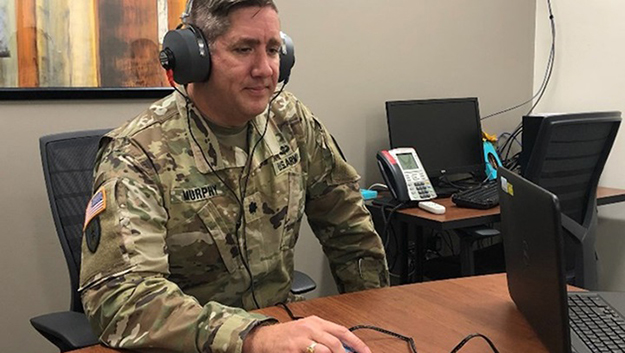A Department of Defense policy will soon require hearing protector fit testing for DOD personnel who are exposed to certain noise levels, according to the Defense Health Agency Hearing Center of Excellence.
The change is an update to Department of Defense Instruction 6055.12 "Hearing Conservation Program" and is expected to be published by the end of 2022.
Hearing protector fit testing measures the amount of noise reduction, or attenuation, a hearing protector provides while it is being worn. This measurement is referred to as a Personal Attenuation Rating, or PAR.
The new requirement calls for initial hearing protector fit-testing for those who have documented noise exposure greater than or equal to 95 decibels over an 8-hour time-weighted average, and who are enrolled in a service hearing conservation program, explained U.S. Air Force Col. Samuel Spear, chief of HCE, a branch of the Research Portfolio Management Division of the DHA Research and Engineering Directorate.
Spear added that fit testing will also be required in the following situations:
- A service member tests positive for a significant threshold shift, otherwise known as hearing loss, in a periodic audiogram.
- Physical changes to a person's ear canal cause a poor fit of their assigned hearing protection devices.
- The primary type of fitted hearing protection device is no longer available to the employee.
- An "early warning" hearing loss occurs. This happens when a person's hearing worsens by 15 decibels at any of the following frequencies: 1000, 2000, 3000, or 4000 hertz.
Spear noted, however, that these are the minimum criteria for hearing protector fit testing in the DOD and the service components may have different requirements. "Each service component may institute more stringent requirements to better meet the needs of their respective hearing conservation program," he said.
TESTING PROTECTIVE EQUIPMENT TO ENSURE READINESS
"Hearing protector fit-testing contributes to service member readiness, because it can mitigate the occurrence of Significant Threshold Shifts and hearing-related fitness for duty evaluations," said Spear.
The testing is also accurate.
"Hearing protector fit testing is a proven way to quantitively measure the amount of noise reduction a person is getting from their specific hearing protector," explained Dr. Theresa Schulz, prevention section lead at HCE, who is heading up efforts to announce and guide the policy change across the DOD. "Fit testing can be used to determine if the person is not achieving adequate protection, and it can remedy the problem through training or finding another type of hearing protector."
There are many benefits to conducting fit testing, which is recommended by the Occupational Safety and Health Administration as a best practice in hearing conservation. According to Schulz, Fit testing can identify workers at risk for noise-induced hearing loss due to inadequate hearing device fit, help personnel select the right device for their work environment, train workers to properly fit and use hearing protectors, and reduce noise-induced hearing loss for service members enrolled in hearing conservation programs.
Schulz added that HCE will distribute information to impacted organizations on how to comply with implementing it before the updated DOD policy is published.
"We're here to help and answer any questions the services may have to enable a successful launch and implementation of this new requirement," said Schulz.





Read Comments